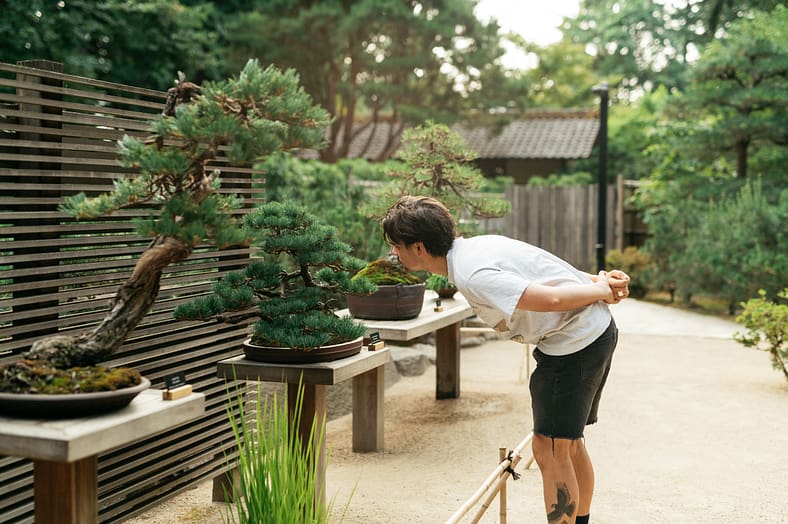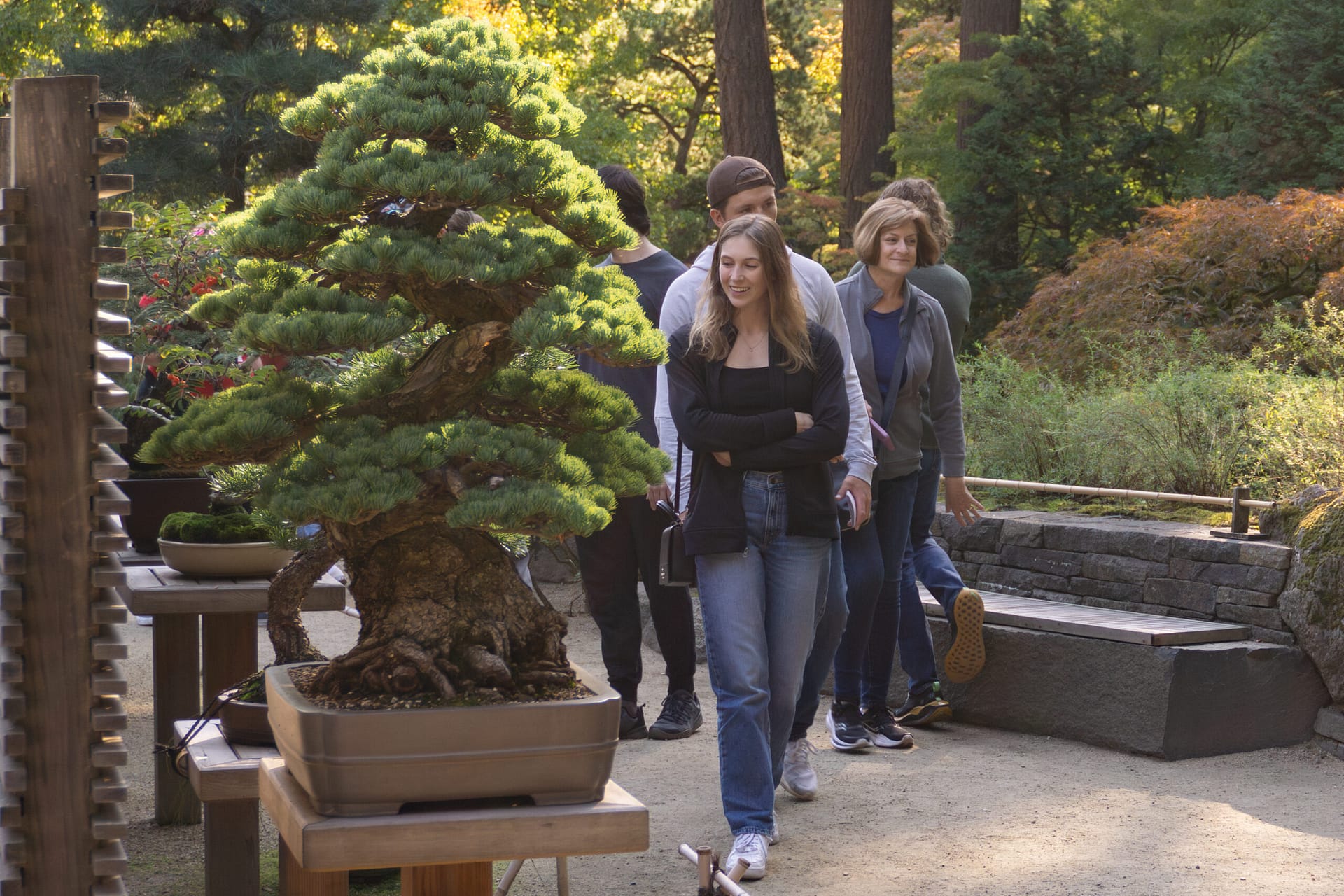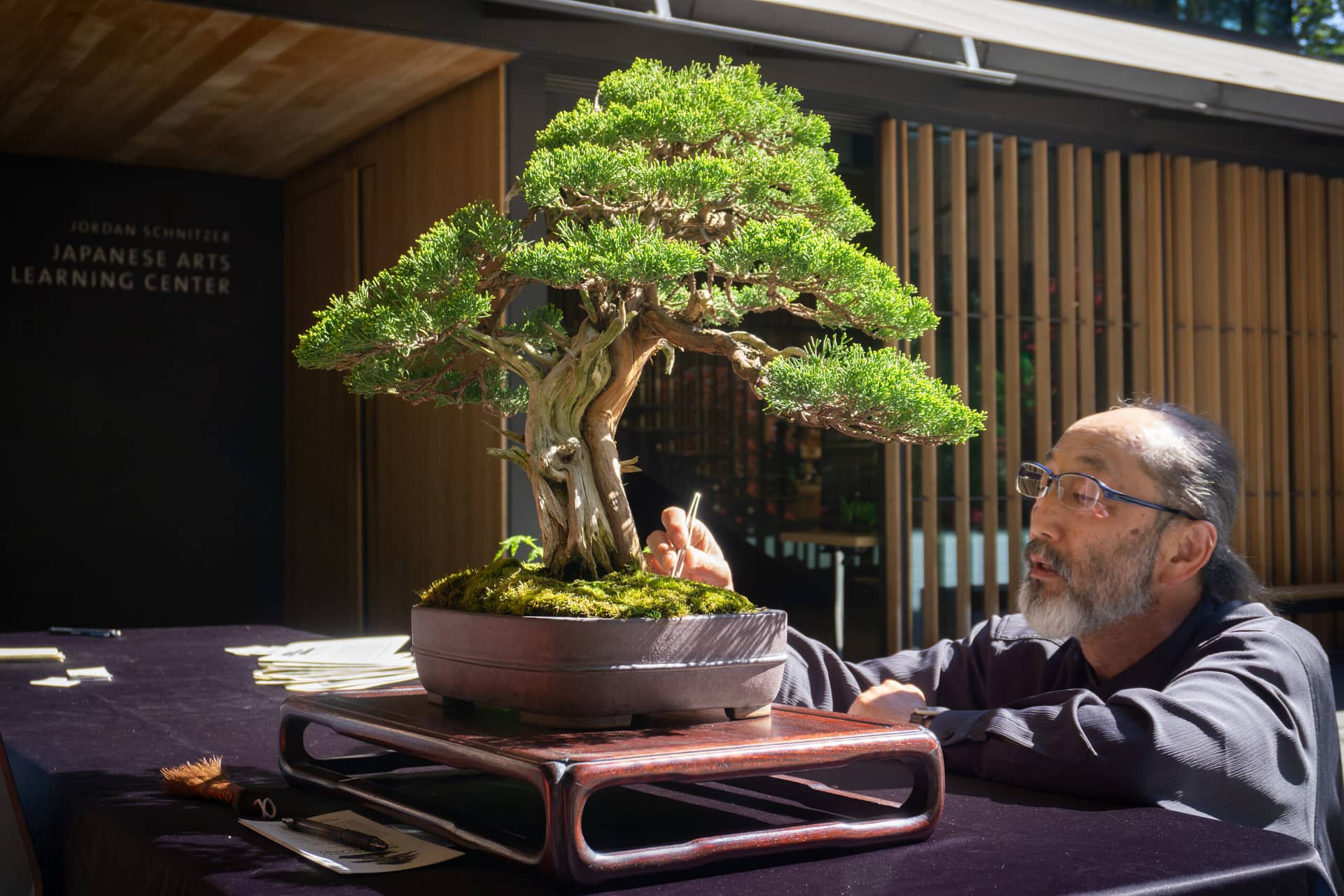
By Will Lerner, Communications Manager for Portland Japanese Garden & Japan Institute
When guests arrive to the Cultural Village of Portland Japanese Garden, the site many head to first is the Ellie M. Hill Bonsai Terrace. Here in this dedicated space, they’re able to see stellar and award-winning bonsai (literally, “tree-in-a-tray”). Those who aren’t done marveling at these small trees can also enjoy them near the rushing water of the Jubitz Oregon Terrace.
That these small trees would be captivating is unsurprising—they’ve dazzled people for centuries. They afford us the chance to see the grandeur of a tree within our field of view, a look both encompassing and intimate. They can captivate us because of their paradoxical quality—appearing to have the look of something we could only see in the wild and yet only having that appearance because of human intervention. But perhaps the most essential trait is that they are not confined to one moment. Bonsai are much like a garden—a work in nearly eternal progress, a tangible connection that binds generations. They are an expression of human care, a kind of love that can’t be defeated, not even by time.
Bonsai (properly pronounced as “bone-sigh,” not “bawn-zai”) have had a presence at Portland Japanese Garden since at least 1969 when the miniature trees were exhibited in celebration of Mother’s Day. Today, our bonsai are typically displayed from mid-April through mid-November, and rotated out based on what is most appropriate for the season both aesthetically and for the well-being of the trees.
Begin Your Bonsai Journey at the Garden

Chat with our Volunteer Bonsai Docents! They are always happy to answer questions guests have. They’re here and available every day the Garden is open from 10 a.m. to 4 p.m. Come find them at the Ellie M. Hill Bonsai Terrace.
View a demonstration in the Cathy Rudd Cultural Corner! We’re proud to offer presentations on bonsai from highly skilled and admired practitioners like Andrew Robson, former President of the Bonsai Society of Portland.
Learn from the masters at the Vollum Library in our Jordan Schnitzer Japanese Arts Learning Center! We have several books by experts on the subject of bonsai. Members are welcome to visit and read up in one of the most beautiful spaces in the Garden.
Fun Facts About Bonsai

Chinese Origins
Bonsai are believed to have been introduced to Japan by way of China’s penjing, or “tray scenery.” For the similarities they may possess, penjing and bonsai are different artforms. Penjing, traditionally, will depict an entire scene within one dish, including physical features such as rocks and even figurines. Most bonsai have little more than the tree itself in their pot.
Tiny Trees
Remarkably, bonsai are indeed trees. They might’ve grown to the heights one could expect to see in the wild were it not for the circumstances they experience. Almost any tree can become bonsai. Some trees are easier to transform into bonsai than others, but you can do it with almost any tree. Though the care and design of bonsai are nuanced and complex, the explanation for why they remain small is relatively simple: the roots are reduced and the branches are pruned.
Portland Loves Bonsai
Portlanders are fortunate that the largest Bonsai Society in the United States is right here at home. Founded in 1966, the Bonsai Society of Portland promotes the art of bonsai through education, exhibits, and social activities. They welcome everyone interested in this unique and beautiful art form to share in the bonsai experience and develop both basic and advanced skills. Several Garden staff and volunteers are members!